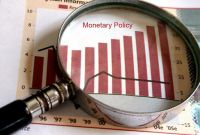
The Indian economy is struggling under the clutches of a hard interest rate regime. Investment has been reduced as rate of interest of loans roared. Investment has responded to the RBI’s high interest rate call and economic growth rate has come down accommodating the high interest rate. Fortunately, inflation is now showing signals of decline and is nearing towards a comfortable zone, driven by negative food inflation. Investors and business people are expecting that the RBI will initiate soft interest rate signals soon.
The most controversial issue in monetary policy execution is the so called conflict between growth and stability. The RBI, during the last 13 monetary policy revisions has built a high interest rate environment in the economy expecting that increasing cost of money will make people away from spending.
A peculiar feature of the monetary policy execution in the post-Lehman era, in the country is that the way to contain prices has fallen on the interest rate channel rather than on liquidity channel. This is visible because the RBI, though, raised CRR to ensure quantitative easing; it injected liquidity through the Repo window on the other side. This repo easing has liberalized the pressure of tight CRR to an extent. To compensate the quantitative easing, the RBI has tightened money flow by adopting a high interest rate policy, expecting that demand for loans will come down. Instantaneous lending to the banking sector aimed to establish financial stability in the system. Over the last few months, the RBI was of course was busy on the LAF to inject money into the system due to deficit liquidity. Banks demanded around one lack crore daily and the central bank deserve credit for tight work on the liquidity front.
Equally important is the level of interest in the economy. Liquidity indeed provides a stable platform. Interest rate is a positive incentive to the macroeconomic.
The RBI should realize that the time to end manipulating on growth to target price stability, has reached. Blindfold execution monetary policy is an instance for RBI’s negative creativity; which can be attributed to the central banks’ hassle to do something to arrest the inflationary spiral.











